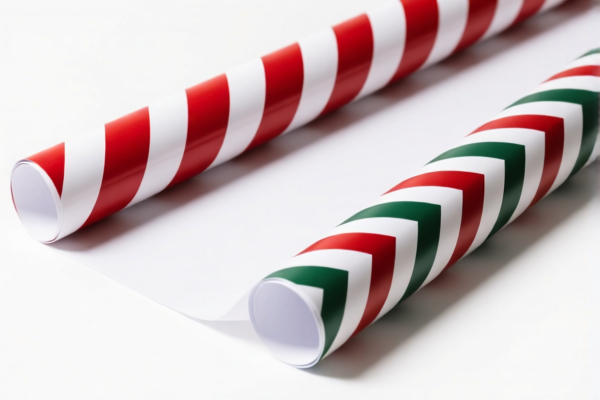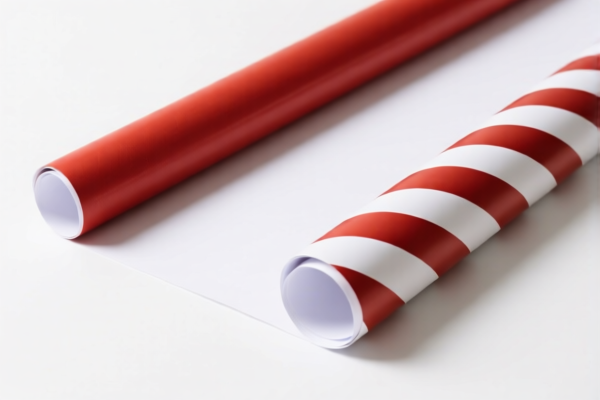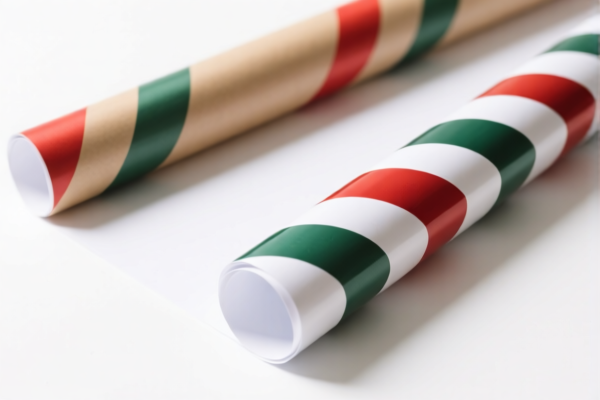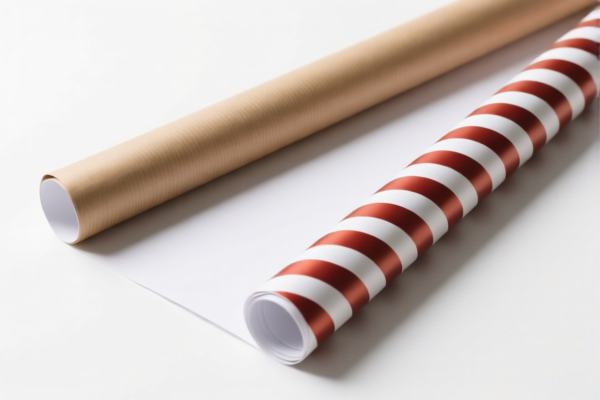| HS Code | Official Doc | Tariff Rate | Origin | Destination | Effective Date |
|---|---|---|---|---|---|
| 4823901000 | Doc | 55.0% | CN | US | 2025-05-12 |
| 4823906000 | Doc | 55.0% | CN | US | 2025-05-12 |
| 4821104000 | Doc | 55.0% | CN | US | 2025-05-12 |
| 4821904000 | Doc | 55.0% | CN | US | 2025-05-12 |
| 4911998000 | Doc | 37.5% | CN | US | 2025-05-12 |
| 4911996000 | Doc | 37.5% | CN | US | 2025-05-12 |
| 4908100000 | Doc | 37.5% | CN | US | 2025-05-12 |
| 4908900000 | Doc | 37.5% | CN | US | 2025-05-12 |




Gift Wrapping Paper
Gift wrapping paper (also known as wrapping paper or gift wrap) is a thin paper designed for enclosing presents. It is commonly used to make gifts more visually appealing and demonstrate thoughtfulness.
Material
Traditionally, gift wrapping paper was made from relatively inexpensive paper pulp. Modern gift wrapping paper can be produced from a variety of materials, including:
- Paper: The most common base material, often wood pulp.
- Foil: Adds a metallic sheen and durability, but is less environmentally friendly.
- Plastic-coated paper: Offers increased durability and water resistance.
- Tissue paper: A thinner, more delicate option, often used for smaller gifts or as decorative layering.
- Fabric: Reusable options like furoshiki cloth offer a sustainable alternative.
Purpose
The primary purpose of gift wrapping paper is aesthetic. It serves to:
- Conceal the identity of the gift: Creating anticipation for the recipient.
- Enhance the presentation of the gift: Adding a decorative element to the occasion.
- Express thoughtfulness and care: The act of wrapping demonstrates effort.
Function
Gift wrapping paper functions by:
- Enclosing the gift: Providing a protective layer.
- Allowing for decoration: Serving as a canvas for designs, patterns, and embellishments.
- Facilitating easy opening: Designed to tear or unroll without damaging the gift.
Usage Scenarios
Gift wrapping paper is used in a wide range of scenarios, including:
- Birthdays: A standard practice for presenting birthday gifts.
- Holidays: Particularly prevalent during Christmas, Hanukkah, and other gift-giving holidays.
- Weddings: Used to wrap wedding gifts.
- Other special occasions: Baby showers, graduations, anniversaries, and thank-you gifts.
Common Types
- Printed Paper: The most common type, featuring a wide variety of designs, patterns, and colors.
- Foil Paper: Metallic and shiny, often used for more festive occasions.
- Tissue Paper: Lightweight and delicate, ideal for smaller gifts or decorative accents.
- Reversible Paper: Features different designs on each side, offering versatility.
- Kraft Paper: A plain, natural-looking option that can be customized with paint, stamps, or other embellishments.
- Patterned Paper: Features repeating designs, often floral, geometric, or themed.
- Recycled Paper: An environmentally friendly option made from post-consumer waste.
Gift wrapping paper falls under the category of paper and paperboard articles, often cut to size or shape for specific uses. Based on the provided information, the following HS codes are relevant:
- 4823901000: This HS code covers “Other paper, paperboard, cellulose wadding and webs of cellulose fibers, cut to size or shape; other articles of paper pulp, paper, paperboard, cellulose wadding or webs of cellulose fibers: Other: Of paper pulp”. This could apply if the gift wrapping paper is made entirely of paper pulp. The total tax rate is 55.0%, comprised of a 0.0% base tariff and a 25.0% additional tariff, increasing to 30.0% after April 2, 2025.
- 4823906000: This HS code covers “Other paper, paperboard, cellulose wadding and webs of cellulose fibers, cut to size or shape; other articles of paper pulp, paper, paperboard, cellulose wadding or webs of cellulose fibers: Other: Other: Other: Of coated paper or paperboard: Gaskets, washers and other seals”. If the gift wrapping paper is coated and used for sealing purposes, this code may be applicable. The total tax rate is 55.0%, comprised of a 0.0% base tariff and a 25.0% additional tariff, increasing to 30.0% after April 2, 2025.
- 4911998000: This HS code covers “Other printed matter, including printed pictures and photographs: Other: Other: Other”. If the gift wrapping paper is printed with designs or patterns, this code could be relevant. The total tax rate is 37.5%, comprised of a 0.0% base tariff and a 7.5% additional tariff, increasing to 30.0% after April 2, 2025.
- 4911996000: This HS code covers “Other printed matter, including printed pictures and photographs: Other: Other: Other: Printed on paper in whole or in part by a lithographic process”. If the gift wrapping paper is printed using a lithographic process, this code may be applicable. The total tax rate is 37.5%, comprised of a 0.0% base tariff and a 7.5% additional tariff, increasing to 30.0% after April 2, 2025.
Chapter 48 relates to paper and paperboard. Chapter 49 covers printed matter. The specific headings and subheadings further classify the type of paper product and whether it is printed or not.
Please note that the correct HS code will depend on the specific composition and printing method of the gift wrapping paper.
Customer Reviews
No reviews yet.